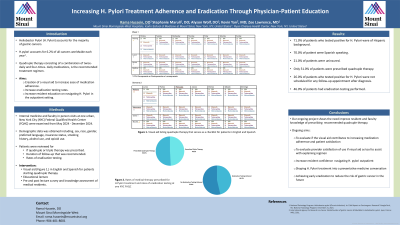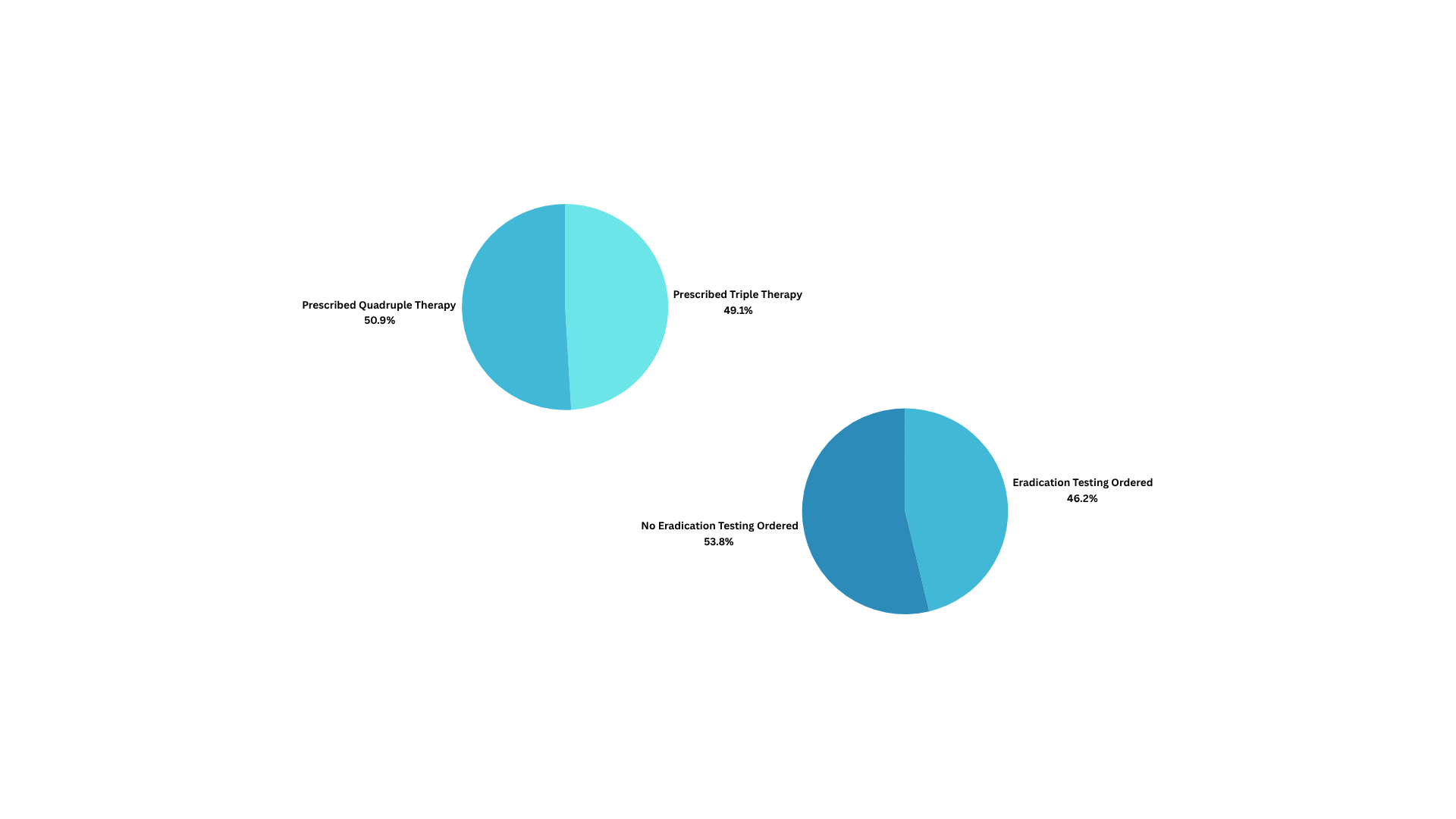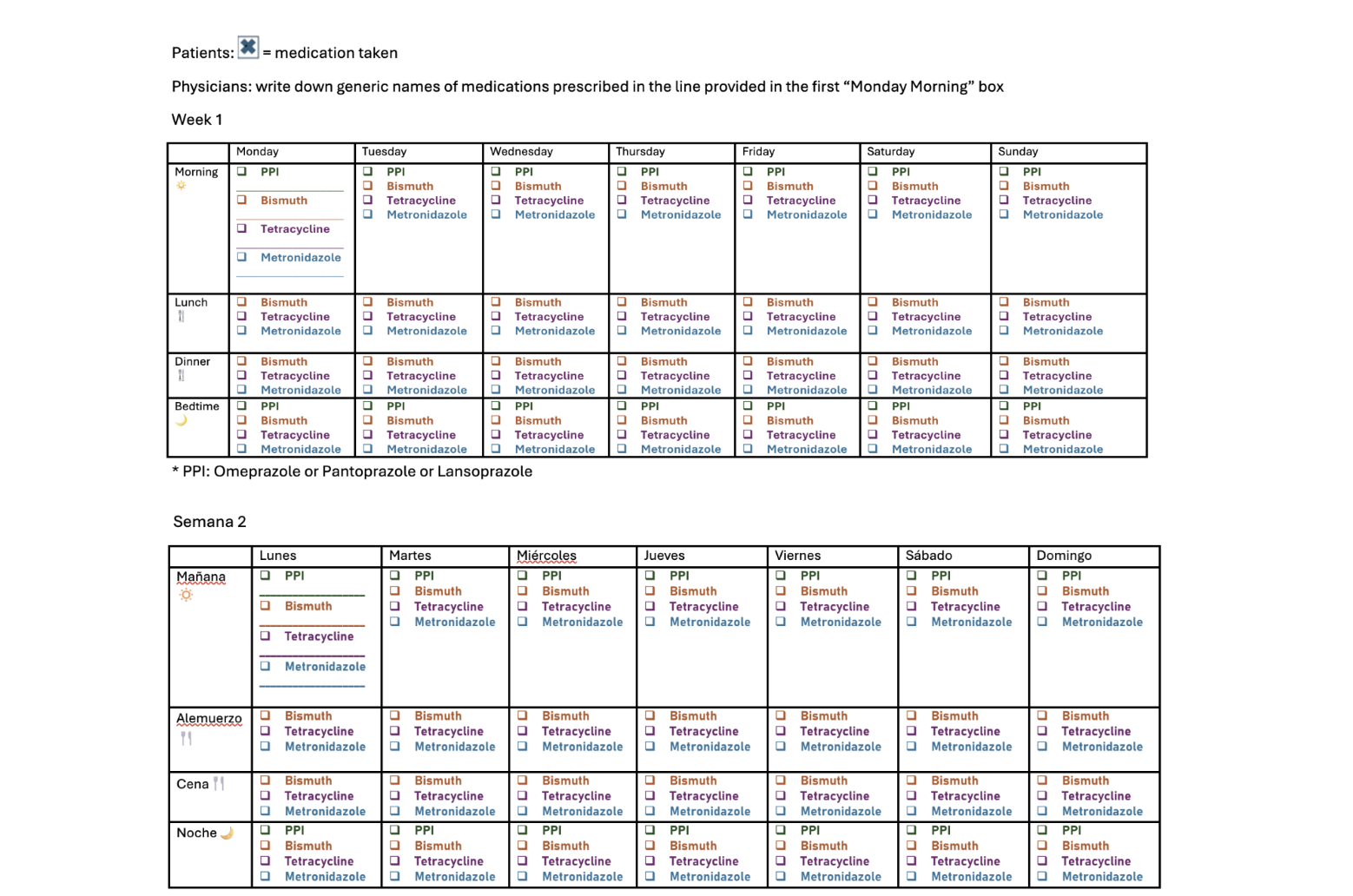Sunday Poster Session
Category: Stomach and Spleen
P2047 - Increasing H. pylori Treatment Adherence and Eradication Through Physician-Patient Education
Sunday, October 26, 2025
3:30 PM - 7:00 PM PDT
Location: Exhibit Hall

Has Audio

Rama Hussein, DO
Mount Sinai West, Icahn School of Medicine at Mount Sinai
New York City, NY
Presenting Author(s)
Rama Hussein, DO1, Stephanie Marull, DO2, Alyson Wolf, DO2, Kevin Yan, MD3, Zoe Lawrence, MD2
1Mount Sinai West, Icahn School of Medicine at Mount Sinai, New York City, NY; 2Mount Sinai West, Icahn School of Medicine at Mount Sinai, New York, NY; 3Icahn School of Medicine at Mount Sinai, New York, NY
Introduction: Heliobacter Pylori (H. Pylori) accounts for the majority of gastric cancers and 6.2% of all cancers worldwide each year1. While H. Pylori testing in the primary care setting usually is performed in a diagnostic approach, it is important to recognize the cruciality of treating and eradicating H. Pylori to prevent mucosal changes that may lead to malignancy. While quadruple therapy is the recommended treatment, prescribing four different medications with varying doses and frequencies can be daunting, not only for the patient but also for providers to explain in a time sensitive clinical session. Our quality improvement initiative focuses on evaluating and increasing rates of adherence to H. Pylori treatment guidelines and rates of eradication testing through physician-patient education. The creation of a visual aid (Figure 1) will be used to assist patients in tracking their medications.
Methods: Resident and faculty in person visits at one urban, New York City (NYC) Federal Qualified Health Center (FQHC) were examined from May to December 2024. 106 patients who tested positive for H. Pylori were reviewed. Demographic data was obtained including, sex, race, gender, preferred language, insurance status, smoking history and alcohol use. Patients were reviewed for which treatment regimen they were prescribed, duration of follow-up recommended and rates of eradication testing.
Results: Our patient population was notable for 71.0% of patients who tested positive for H.Pylori being of Hispanic background. 70.0% of patient were Spanish speaking. 21.0% of patients were uninsured. Only 50.9% of patients were prescribed quadruple therapy. 46.2% of patients had eradication testing performed (Figure 2). 26.0% of patients who tested positive for H. Pylori were not scheduled for any follow-up appointment after diagnosis.
Discussion: Our data highlights that navigating H.Pylori treatment may not only be daunting for patients committing to quadruple therapy, but also for providers. This data underscores the need for further education of recommended guidelines. Future directions for this project include evaluating if the incorporation of a visual aid in English and Spanish to assist patients in taking the treatment regimen increases medication adherence. We hope that our quality improvement project increases resident confidence navigating H. Pylori from a preventive medicine lens, achieving eradication now to reduce the risk of gastric cancer in the future.


Disclosures:
Rama Hussein, DO1, Stephanie Marull, DO2, Alyson Wolf, DO2, Kevin Yan, MD3, Zoe Lawrence, MD2. P2047 - Increasing <i>H. pylori</i> Treatment Adherence and Eradication Through Physician-Patient Education, ACG 2025 Annual Scientific Meeting Abstracts. Phoenix, AZ: American College of Gastroenterology.
1Mount Sinai West, Icahn School of Medicine at Mount Sinai, New York City, NY; 2Mount Sinai West, Icahn School of Medicine at Mount Sinai, New York, NY; 3Icahn School of Medicine at Mount Sinai, New York, NY
Introduction: Heliobacter Pylori (H. Pylori) accounts for the majority of gastric cancers and 6.2% of all cancers worldwide each year1. While H. Pylori testing in the primary care setting usually is performed in a diagnostic approach, it is important to recognize the cruciality of treating and eradicating H. Pylori to prevent mucosal changes that may lead to malignancy. While quadruple therapy is the recommended treatment, prescribing four different medications with varying doses and frequencies can be daunting, not only for the patient but also for providers to explain in a time sensitive clinical session. Our quality improvement initiative focuses on evaluating and increasing rates of adherence to H. Pylori treatment guidelines and rates of eradication testing through physician-patient education. The creation of a visual aid (Figure 1) will be used to assist patients in tracking their medications.
Methods: Resident and faculty in person visits at one urban, New York City (NYC) Federal Qualified Health Center (FQHC) were examined from May to December 2024. 106 patients who tested positive for H. Pylori were reviewed. Demographic data was obtained including, sex, race, gender, preferred language, insurance status, smoking history and alcohol use. Patients were reviewed for which treatment regimen they were prescribed, duration of follow-up recommended and rates of eradication testing.
Results: Our patient population was notable for 71.0% of patients who tested positive for H.Pylori being of Hispanic background. 70.0% of patient were Spanish speaking. 21.0% of patients were uninsured. Only 50.9% of patients were prescribed quadruple therapy. 46.2% of patients had eradication testing performed (Figure 2). 26.0% of patients who tested positive for H. Pylori were not scheduled for any follow-up appointment after diagnosis.
Discussion: Our data highlights that navigating H.Pylori treatment may not only be daunting for patients committing to quadruple therapy, but also for providers. This data underscores the need for further education of recommended guidelines. Future directions for this project include evaluating if the incorporation of a visual aid in English and Spanish to assist patients in taking the treatment regimen increases medication adherence. We hope that our quality improvement project increases resident confidence navigating H. Pylori from a preventive medicine lens, achieving eradication now to reduce the risk of gastric cancer in the future.

Figure: Visual aid listing quadruple therapy that serves as a checklist for patients in English and Spanish

Figure: Rates of medical therapy prescribed for H.Pylori treatment and rates of eradication testing at one NYC FHQC
Disclosures:
Rama Hussein indicated no relevant financial relationships.
Stephanie Marull indicated no relevant financial relationships.
Alyson Wolf indicated no relevant financial relationships.
Kevin Yan indicated no relevant financial relationships.
Zoe Lawrence indicated no relevant financial relationships.
Rama Hussein, DO1, Stephanie Marull, DO2, Alyson Wolf, DO2, Kevin Yan, MD3, Zoe Lawrence, MD2. P2047 - Increasing <i>H. pylori</i> Treatment Adherence and Eradication Through Physician-Patient Education, ACG 2025 Annual Scientific Meeting Abstracts. Phoenix, AZ: American College of Gastroenterology.
